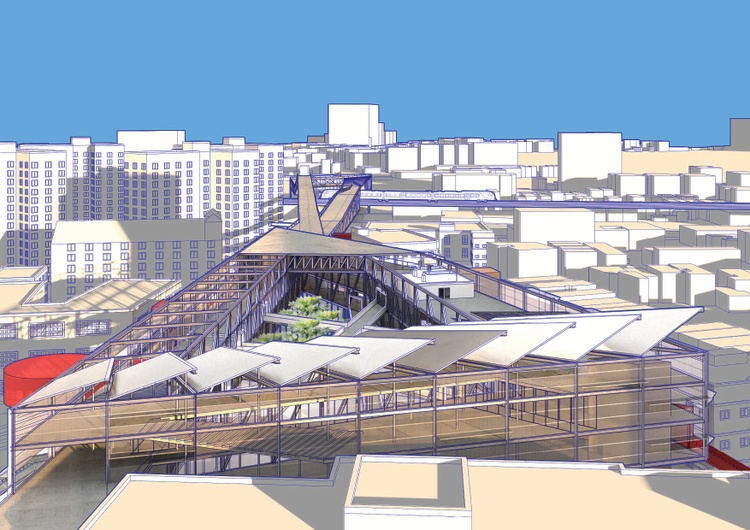Check Out Acclaimed Jobs by Distinguished CDA Architects
Check Out Acclaimed Jobs by Distinguished CDA Architects
Blog Article
A Detailed Introduction of Architectural Styles and Their Influence on Modern City Planning and Development
Architectural styles have actually long functioned as a mirror to the social worths and technical developments of their time, playing an important function fit modern-day city preparation and development. From the majesty of Neoclassicism to the practical strategy of Brutalism, each design has actually presented unique ideas that affect metropolitan looks and functionality. As contemporary obstacles occur, consisting of sustainability and area needs, comprehending these historic frameworks comes to be essential. The resulting discussion not only educates future design practices however likewise increases pertinent questions regarding the equilibrium in between heritage and technology in our advancing metropolitan landscapes.
Historic Overview of Architectural Styles

As cultures transitioned through the Center Ages, Gothic design emerged, characterized by its verticality and complex detailing, mirroring the spiritual desires of the age. The Renaissance marked a rebirth of classic perfects, merging art and style in ingenious ways that influenced succeeding styles across Europe.

Today, building styles remain to evolve, driven by globalization and sustainability issues, showing a vibrant interaction in between heritage and advancement. This historic review highlights the value of architecture as a mirror of societal evolution and as a catalyst for city growth.
Key Architectural Styles Explained
The variety of architectural styles reflects the myriad influences that form our constructed setting, each embodying unique features and cultural values. Secret architectural styles consist of Classical, Gothic, Baroque, Innovation, and Postmodernism, each representing one-of-a-kind historical contexts and aesthetic philosophies.
Timeless design, rooted in old Greece and Rome, emphasizes symmetry, percentage, and the use of columns (cda architects). In contrast, Gothic design, thriving in the center Ages, is characterized by pointed arches, ribbed vaults, and flying buttresses, producing an aerial top quality in cathedrals. Baroque style, arising in the 17th century, is noted by splendour, elaborate embellishment, and a dynamic interplay of light and darkness
Modernism, which gained energy in the very early 20th century, focuses on feature over kind, utilizing new materials like steel and glass to develop minimal structures. Postmodernism, responding versus the austerity of Modernism, welcomes eclecticism and historical recommendation, usually including playful elements and irony.

Influence On Urban Planning
In forming the development of cities, building designs substantially affect metropolitan preparation choices. The option of architectural style usually determines the aesthetic appeals, functionality, and total character of metropolitan atmospheres.
Additionally, building styles can affect zoning policies and land use plans. Urban organizers must take into consideration the prevailing building trends when making districts, making sure that new advancements balance with existing structures. This consideration cultivates cohesive city landscapes and improves community identification.
The application of specific building designs can additionally affect socioeconomic factors within a city. For instance, high-end modern styles may attract upscale residents and organizations, causing gentrification, while extra economical housing services might focus on sensible and lasting designs to fit varied populations. Inevitably, the interaction between building styles and urban preparation produces vibrant cities that mirror both historical context and contemporary needs, forming the lived experiences of their residents
Sustainability and Modern Design
Building designs play a pivotal function in dealing with modern difficulties, specifically in the realm of sustainability. As city locations increase and environmental concerns intensify, modern architecture significantly accepts lasting design principles that focus on power efficiency, resource preservation, and marginal environmental impact.
Contemporary architectural movements, such as biophilic design and environment-friendly style, supporter for structures that balance with their environments, using natural materials and promoting biodiversity. These designs frequently include renewable resource sources, such as photovoltaic panels and wind turbines, to lower dependence on fossil fuels and reduced carbon footprints.
Moreover, the combination of sophisticated technologies, such as smart building systems, improves energy administration, enhancing resource usage while ensuring resident comfort. Cutting-edge water monitoring strategies, consisting of rain harvesting and greywater recycling, additional contribute to sustainable city atmospheres.
Especially, sustainability extends beyond environmental issues; it encompasses social and economic dimensions. By cultivating community well-being and read this post here promoting inclusivity, modern-day architectural designs align with sustainable development objectives. As a result, the development of architectural techniques remains to shape durable cities that not only meet the needs of today yet likewise guard the future for generations to find.
Community Interaction in Style
Area involvement in style functions as a crucial bridge in between architects and the populaces they serve, ensuring that the built atmosphere reflects the needs and desires of its users. This joint procedure invites community members to add their understandings and directory preferences, cultivating a sense of possession and responsibility towards the rooms they populate.
Reliable neighborhood engagement employs different approaches, such as workshops, surveys, and public forums, to gather diverse perspectives. These methods facilitate a two-way discussion, allowing engineers to recognize regional contexts while equipping residents to articulate their worries and needs. This inclusivity not only improves the layout quality yet additionally promotes social equity by dealing with the one-of-a-kind challenges faced by marginalized groups.
Moreover, area interaction can result in ingenious solutions that may not emerge in a typical design procedure. By integrating neighborhood expertise and social values, architects can produce areas that reverberate more deeply with customers, enhancing use and sustainability. Inevitably, prioritizing community involvement in style procedures leads to atmospheres that support social interactions, assistance health, and strengthen area connections, thereby playing an essential function in read shaping modern-day city landscapes.
Verdict
Architectural styles have actually greatly affected modern city preparation and development, reflecting evolving social and technical contexts. The assimilation of historical looks with contemporary requirements fosters metropolitan atmospheres that focus on sustainability and area interaction. As cities continue to grow and adapt, the ongoing discussion between building heritage and modern layout principles will remain vital in developing comprehensive, dynamic areas that improve lifestyle and advertise social equity. The future of urban development depend upon this harmonious equilibrium.
Report this page